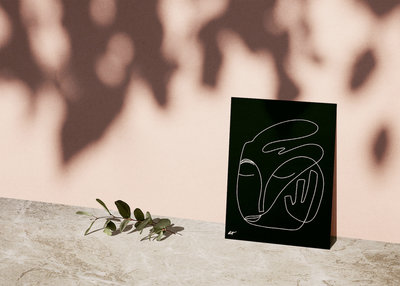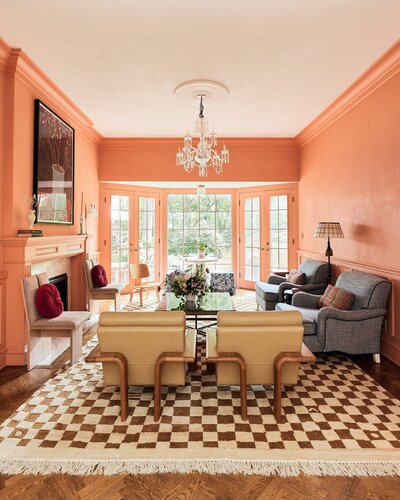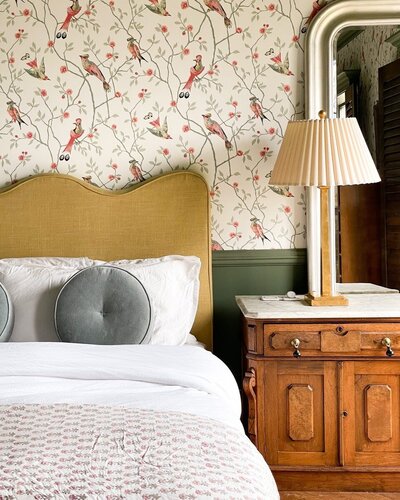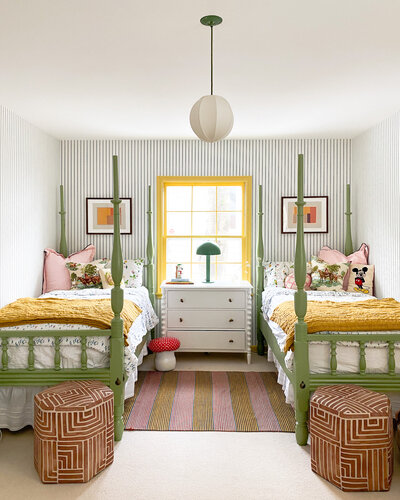

In the fall of 2019, I was gifted a beautiful journal. Beyond the allure of a cloth-bound notebook and a fancy pen to use with it, I was sucked into the journal the way I get sucked into a good story: passionately, obsessively. It was a habit-tracking journal, and every single day since I opened the notebook up, nearly three years ago, I have tracked my habits.
Why? Well, first, why not? And second, because we’re only given so much time to make a difference, achieve our goals, and spend time doing the things we love—and I want to make sure I’m actively working toward those aspirations. It took tracking my habits to understand that I wasn’t working as hard toward my goals as I’d thought. It made me realize the discrepancy between what I thought I spent my time doing and what I actually spent it doing. This was a slap in the face, I’ll be honest. But a good kind; more like a loving nudge from a wise elder.
We’re only given so much time to make a difference, achieve our goals, and spend time doing the things we love—and I want to make sure I’m actively working toward those aspirations.
If habit tracking is a new concept for you, here’s a brief overview of how it works:
(For a more comprehensive explanation, click here for my original article explaining how it’s changed my life.)
1. Make a grid.
On one axis, write out the habits you’d like to track. When you’re just starting out, it’s all about becoming aware of what your current habits are so that you can adjust as you wish. List every habit you can think of, including both positive and negative habits. Here’s a general idea of habits you could track:
- Exercising
- No phone an hour after waking up
- No phone an hour before bed
- Reading
- No social media
- Walking
- Studying (insert language or skill you want to learn)
- Meditating
- Spending time outside
- Watching TV
- Device-free time with family
A note on wording: If you have a habit you’d like to quit, like nail biting, for example, you could list your habit as No Nail Biting or Nail Biting-Free. I’ll get to how to track it next.
2. Give yourself an X.
On the second axis, number the days of the month. At the end of each day, go through your list of habits and give yourself an X next to each one you did that day—or didn’t do, depending on how you wrote down the habit. (In the nail-biting example above, you’d give yourself an X if you didn’t bite your nails that day.) Or give yourself a checkmark or a smiley face. You do you.
3. Analyze.
At the end of your first month, you’ll get a good idea of how you spend your non-working time. Use this information to inform the habits you wish to track next month. Make adjustments and set goals. Write your goals out in the same journal so that every time you log your habits, you see what you’re striving for, then compare against them at the end of every month so you can see how you did.
One thing I particularly liked about the journal I have is that there’s a space to total each habit at the end of the month. If you’re a person motivated by progress (whether good or bad progress), adding up the number of days you did your habits will be informative for you.
How does this benefit me today? It helps me identify patterns, which shines a light on how I operate. And only by knowing how I operate can I understand how to make changes in my day-to-day.
An example: In March of 2020 I went twenty-seven days without dining out (you probably did something similar). I only went four days without social media. In hindsight, it would have been valuable for me to spend fewer days on social media that month, given the kind of information I was consuming. How does this benefit me today? It helps me identify patterns, which shines a light on how I operate. And only by knowing how I operate can I understand how to make changes in my day-to-day.
While looking through my habit journal (I have used the same one since I started at the end of 2019), I notice seasons in my life; the season of being diligent about keeping up with my Italian and the season of meditation. I also notice the through-lines, the habits that are easy for me, and the habits I still struggle with. Looking back is eye-opening in many ways.
Here are some learnings I’ve distilled from looking back and reflecting on my experience tracking my habits:
1. Consistency is a motivator.
It’s hard to miss a day of something when you’re on a streak. If you’ve gone all month without missing a day of going for a walk, why miss it today? Over time, consistency renders itself its own form of accountability.
Another example: I track the days I go without eating meat. When I first started doing this, it was one of the most enlightening habits to track. I thought I rarely ate meat. That could not have been farther from the truth! When I started tracking, I was eating meat just about every day. I had no idea. (I won’t get into the reasons I care about my meat consumption here, but I included it because it’s important to me.) Yesterday I had gone the whole day without eating meat. At dinner, my daughter didn’t finish her chicken nuggets and I reached for them almost without thinking. But then I realized it had been a meat-free day thus far and I wouldn’t get my X next to that habit if I ate her nuggets. So I handed them to my husband, and that night before bed, I was able to give myself an X.
2. With separation comes realization.
When I look at my first months of habit tracking, I see some very clear patterns. Some of my habits have gone beyond being habitual; they are just who I am. I don’t even need to track them anymore because they run in my blood now. I also see that I struggle today with the same things I struggled with then: going a day without social media, for example. Or journaling.
When I first started, I was journaling about seventy-five percent of the time. Six months later, I was down to thirty percent. One year into tracking, I journaled just twice in a month. The next month I didn’t journal at all, and three months later, I quit tracking it. Today, a year and a half after I stopped, journaling has been replaced by different habits, more health-oriented ones like getting 10,000 steps each day. But I want to journal more, so next month when I write out the habits I want to track, I will add it to my list. It’s not going to turn me into a nightly journaler, but at least it will keep the thought front and center. Who knows, maybe if I journal every day for a month, it will become habitual again.
It wasn’t until I started habit tracking that I felt like I really had a grip on my time—both how fast it goes and how I spend it.
I don’t know how long I’ll continue to track my habits, but I don’t see an end to it right now. Something about it is so fulfilling to me—the awareness, maybe, or the idea that I can make changes, I just need to know where to start. It puts the power in my hands. Even though I’ve always been able to control what I do and don’t do (we all have that ability in some way, right?), it wasn’t until I started habit tracking that I felt like I really had a grip on my time—both how fast it goes and how I spend it.
In the oft-quoted book The Writing Life, Annie Dillard says that how we spend our days is, of course, how we spend our lives. I don’t want to spend my life scrolling on my phone, missing out on what matters in this one glorious life I’ve been given. This is why I track my habits, and this is why I urge you to try it out, too.


Kolina Cicero is enamored with stories – reading them, writing them, getting lost within them. Other things she loves include yoga, traveling, and taking cooking, Italian, and writing classes. Her first children’s book, Rosie and the Hobby Farm, was published in July 2020.
BY Kolina Cicero - September 23, 2022
Most-read posts:
Did you know W&D now has a resource library of Printable Art, Templates, Freebies, and more?
take me there
Get Our Best W&D Resources
for designing a life well-lived




Thank you for being here. For being open to enjoying life’s simple pleasures and looking inward to understand yourself, your neighbors, and your fellow humans! I’m looking forward to chatting with you.
Hi, I'm Kate. Welcome to my happy place.
















Hi!
What kind of notebook would you recommend to a newbie? 🙂
Hi Donna! The one I use is the Clear Habit Journal: https://baronfig.com/products/clear-habit-journal
I know Wit & Delight also has a free downloadable habit tracker here: https://hello.witanddelight.com/habit-tracker-worksheet
Good luck!